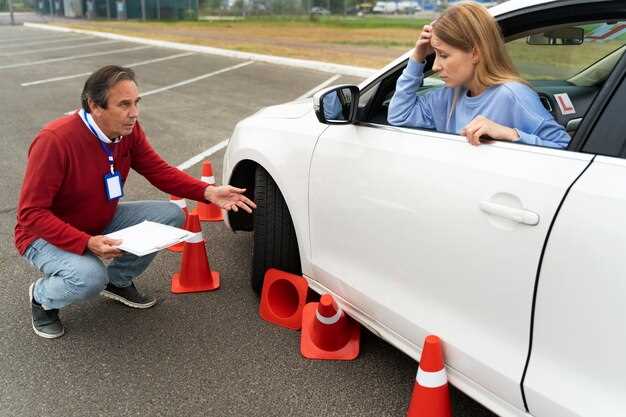
Understanding Crash Ratings of Audi Vehicles

The safety of a vehicle is an essential consideration for any car buyer, and Audi has established a reputation for producing safe, high-quality cars. Understanding Audi vehicle crash ratings is crucial for potential buyers who want to ensure their safety and that of their passengers. Crash ratings are determined through rigorous testing and evaluations conducted by various safety organizations, providing insights into how well a vehicle is likely to perform in the event of an accident.
Audi’s commitment to safety is reflected in its advanced engineering and technology designed to protect occupants during a crash. Each model undergoes extensive crash tests that assess everything from structural integrity to airbag deployment, and these ratings can vary significantly across different models. By examining these ratings, consumers can make informed decisions about which Audi vehicle best suits their safety needs, allowing them to drive with confidence on the road.
This article will delve into the specifics of Audi vehicle crash ratings, explaining how these ratings are determined, what they mean for drivers, and how they compare to other brands. By the end, readers will have a comprehensive understanding of the safety features that underpin Audi’s reputation and how crash ratings contribute to an informed vehicle selection process.
How Audi Models Perform in Crash Tests

Audi has established a strong reputation for prioritizing safety in its vehicle designs, and this commitment is reflected in the results of various crash tests. Independent organizations, such as the National Highway Traffic Safety Administration (NHTSA) and the Insurance Institute for Highway Safety (IIHS), conduct rigorous evaluations to assess the safety performance of vehicles during accidents. Audi models consistently achieve high ratings in these evaluations, showcasing their robust engineering and advanced safety features.
For instance, many Audi vehicles are equipped with state-of-the-art safety systems, including adaptive cruise control, lane-keeping assist, and advanced airbag configurations. These systems not only help prevent accidents but also enhance occupant protection in the event of a crash. When tested, Audi models often receive top scores in categories like frontal crash, side impact, and rollover resistance.
A notable example is the Audi Q5, which has received favorable ratings from both NHTSA and IIHS. Its strong structure, combined with intelligent safety technologies, contributes to its excellent performance in crash tests. The vehicle’s ability to absorb impact energy and protect occupants makes it a leading choice among compact luxury SUVs.
Furthermore, Audi invests heavily in research and development to continually improve its safety standards. This proactive approach not only enhances the performance of new models but also ensures that existing vehicles remain competitive in terms of safety ratings. The brand’s ongoing commitment to innovation in safety technology is a core aspect of its ethos, positioning Audi as a leader in automotive safety.
Key Safety Features of Audi Vehicles
Audi vehicles are designed with a strong emphasis on safety, incorporating a variety of advanced technologies that enhance passenger protection. Understanding these features is crucial for anyone considering an Audi.
One of the standout aspects of Audi’s safety system is the Quattro all-wheel drive, which provides superior traction and stability during adverse weather conditions. This feature not only enhances driving performance but also significantly contributes to crash avoidance in slippery situations.
Additionally, adaptive cruise control equipped with start-stop technology helps maintain a safe distance from other vehicles. This intelligent system automatically adjusts speed and can even bring the vehicle to a complete stop, minimizing the risk of rear-end collisions.
Audi also integrates lane departure warning systems that alert drivers if they unintentionally drift out of their lane. Coupled with lane-keeping assistance, this feature can actively steer the vehicle back into its lane, further enhancing road safety.
Moreover, the crash test ratings produced by independent organizations consistently showcase Audi’s commitment to safety. These vehicles undergo rigorous assessments that evaluate crash performance and occupant protection, ensuring they meet high safety standards.
Another key safety element is the advanced airbag system, which includes multiple airbags strategically placed throughout the vehicle. In the event of a collision, these airbags deploy to protect occupants from injury, significantly reducing the impact force.
Finally, night vision assistance and traffic sign recognition enhance overall driver awareness. By utilizing infrared technology and camera systems, these features help drivers stay informed and make safer driving decisions.
Interpreting Crash Ratings for Better Vehicle Choices

Crash ratings are essential indicators of a vehicle’s safety performance during collisions. These ratings, often provided by organizations such as the National Highway Traffic Safety Administration (NHTSA) and the Insurance Institute for Highway Safety (IIHS), assess how well a car protects its occupants in various crash scenarios. Understanding the specifics of these ratings can help consumers, particularly those interested in brands like Audi, make informed vehicle choices.
Each vehicle undergoes rigorous tests that simulate real-world collision conditions. Results are then presented in an easy-to-understand format, usually on a scale indicating safety levels. For example, vehicles may receive a star rating or a letter grade, with higher scores denoting better performance in safety evaluations. When examining Audi models, prospective buyers should pay attention to these ratings, which often reflect the manufacturer’s commitment to safety engineering.
It is also crucial to consider the specific types of crashes tested. These typically include front, side, and rollover tests. Additionally, advancements in safety technology, such as airbags and electronic stability control, are often highlighted in crash ratings, emphasizing how these features contribute to overall vehicle safety. Enthusiasts looking at Audi vehicles should research individual models and their unique safety features, which can influence their crash ratings significantly.
Ultimately, interpreting crash ratings goes beyond mere numbers; it involves understanding the context of the tests, the technology in place, and how a particular vehicle fits into the broader safety landscape. By looking at these ratings critically, consumers can make smarter decisions that enhance their safety on the road.